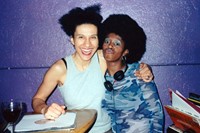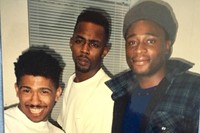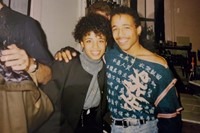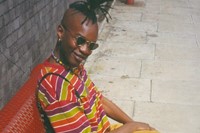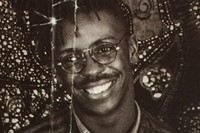Black and Gay, Back in the Day is a digital community archive remembering pre-2000 Black queer life in Britain, as it was – here, founders Jason Okundaye and Marc Thompson discuss the account and why it’s been successful
Black and Gay, Back in the Day is an Instagram account and archival project dedicated to the remembering and honouring history of Black queer people in Britain. Founded by journalist Jason Okundaye and activist and organiser Marc Thompson, who is the founder of PrEpster and director of The Love Tank, the account launched on 1 February this year to coincide with LGBT History Month. In the short time since its inception, it’s already gained a flurry of media coverage and upwards of 5,000 followers.
The account showcases a compelling mixture of historical events, whether that’s Pride marches or protests, and intimate glimpses of the everyday lives of a demographic that has often been sidelined in conventional (ie white) accounts of gay British history. I caught up with Okundaye and Thompson to talk about their curatorial process, the value of intergenerational friendships (there are 27 years between them), the failures of gay media, and why the approach to history which the account embodies is so important.
James Greig: I’d like to know more about your curation process. What are you looking for in an image? Is there any criteria that it has to meet?
Marc Thompson: What we’re looking for is an authentic representation of Black LGBTQ+ people before 2000. And that means capturing us in a range of settings – from protests, to pride, to parties, to moments of intimacy, to individuals just being their true selves. That is the basic criteria for us.
Jason Okundaye: Also, the pictures that we have are of Black queer people together. Whenever you see representations of this demographic in the past, they’re often depicted as a kind of add-on to a white social network, which was not always not the case. Most Black queer people existed within Black culture. So it’s important to show them with ghetto blasters, at the Black gay club, in Brixton, in these sites of Black cultural heritage.
“Most Black queer people existed within Black culture. So it’s important to show them with ghetto blasters, at the Black gay club, in Brixton, in these sites of Black cultural heritage” – Jason Okundaye
JG: Where are you getting these images from? And do you think that that’s going to change going forward?
MT: We put a call for submissions, and we also contacted people directly – people that I’ve hung out, worked, or partied with over the years, old school activists. We just reached out and said, “Can you dig into your photo albums, look into your old cupboards, and pull out anything you’ve got.” And I think that going forward, that’s what we’ll continue to do. But we hope that it becomes so successful that people see the value of what we’re doing, and feel motivated to add to the archive.
JO: Yeah, I think it’s important that anything that we put on the archive is something that you could find in your family photo album or in someone’s home. We wanted to get the sense that each person’s home is an archive, and that these photographs, which were often taken on disposable cameras, are worthy of being presented in a historical display.
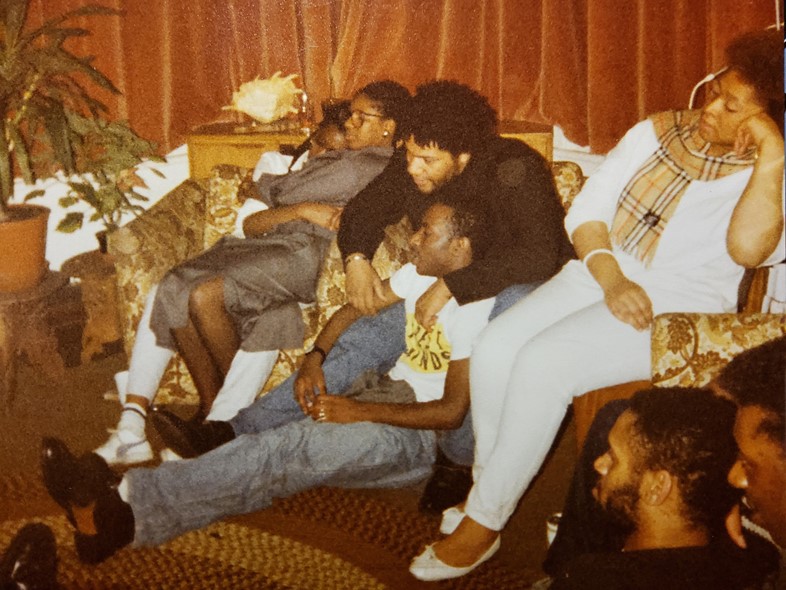
The account has grown very quickly in the short time that you’ve started it and you’ve gotten a lot of media coverage. Are you happy with how it’s been received?
MT: We’re both really pleased it’s been so gratefully received by the community. Neither of us imagined that it would grow like this. I think what it demonstrates is there is an appetite for this kind of archive and this kind of history. People are hungry to know what happened in the past and where they come from. And I think that’s why it’s been successful.
“People are hungry to know what happened in the past and where they come from. And I think that’s why it’s been successful” – Marc Thompson
JO: The media coverage has been great and we’ve done some wonderful interviews. But I think a lingering question for both Marc and I has been: if we can get featured by these mainstream outlets like BBC Radio, ITV News, GQ, The Face, then why have we not been picked up by a single gay media publication? What we tend to find with gay media is that, for the most part, when they’re reporting news stories about Black queer people, they tend to be about traumatic incidents or something terrible that’s happened. So this month, example, there was a Zoom meeting of Black LGBTQ+ students at Edinburgh University which was hijacked by online trolls making racist and homophobic comments. That was reported – and we’re not saying that that shouldn’t have been. But why does that get prioritised as a story over something which is inspiring?
I think this shows the same issue that Marc was facing back in the 80s and 90s, that these outlets have always ignored us. And that just confirms why we need projects like this in the first place, because we can’t rely on the broader LGBTQ+ community to record our stories, to preserve our memory, to integrate us. And we don’t even want that integration. We want to show that this is our space.

One thing I really like about the account is the fact that it’s an intergenerational project. Lots of younger queer people seem to have this real yearning for some kind of intergenerational community – they love the idea of learning from their queer elders – but they also concieve of this as something that’s basically impossible. This was really apparent in the reaction to It’s A Sin, for example. In many cases, I think a lot of young people seem to think that the Aids crisis literally “wiped out a whole generation” and that’s why it’s impossible to make these kinds of connections today. Was the intergenerational aspect an important part of this endeavour for you?
JO: Yeah, the reaction to It’s A Sin was weird. I saw so many tweets where people were saying, “I’m mourning the loss of my queer elders, who no longer exist! Now, I have no one to look up to.” And I just thought … Marc lives one bus ride away from me. Literally one bus. These people are all around you. They’re not mysterious. So I think it’s a bit dishonest. When I used to go to Black Pride, even before I knew Marc, I did see elderly queer people. If you really wanted, you could go up to them and talk to them. They are always very friendly, and happy to share their story. So I think that it takes a bit of humility and active effort on behalf of young people.
I don’t act like it’s completely easy, though. With Marc and I, we ended up getting connected because I was researching his line of work. It was academic at first until we actually became friends, and I realised that we were quite similar. Whenever we chat, it’s like, OK, we are uncle and nephew. What I will say is that it’s been the joy of my life, meeting Marc and him connecting me with some of his friends. It’s been one of the most valuable things I’ve ever done for myself in terms of establishing my sense of identity and really feeling like I have a history in this country, and not feeling so much like an internal alien.
MT: I’ve been committed to intergenerational work for a good few years. And for me, it’s partly personal. Because coming up, I didn’t have those mentors. And it wasn’t because my generation was wiped out by HIV. It was because we were a relatively young community, and the men and women before us were either deeply closeted or were really not visible, or were just not in that position to act in that role. So I have a certain amount of privilege of having survived not only the Aids epidemic, but just queer life in general, and I feel it’s my responsibility to pass that on.
Jason and I’s relationship is really special, because not only am I able to impart my knowledge and experience to Jason, but he is teaching me things too. He’s passing stuff up that I didn’t know and I wasn’t aware of. I think there’s also a responsibility for us who are older to remain curious, to remain plugged in, because we need to be there for young people.
Follow Black & Gay, Back in the Day on Instagram here.

